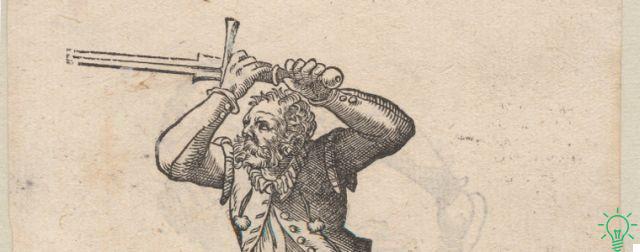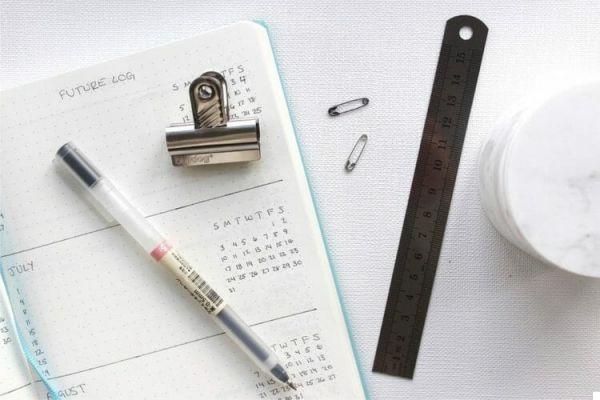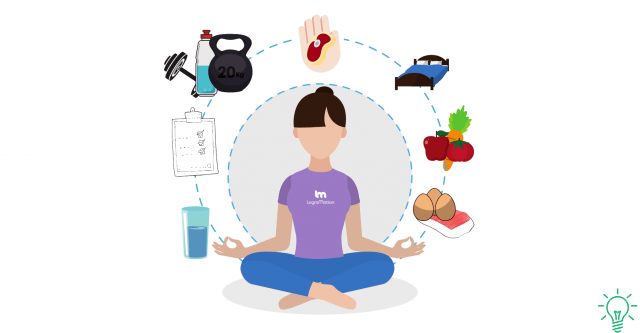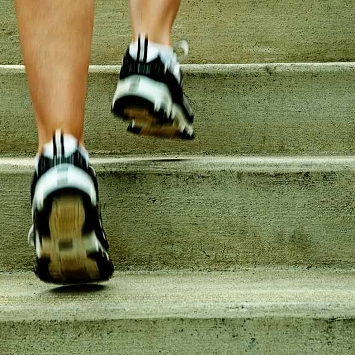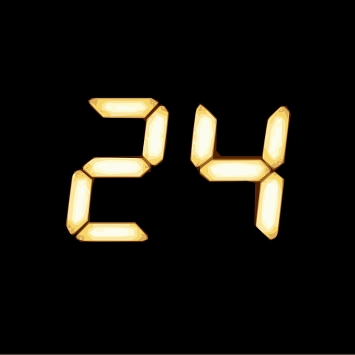Do you want to improve your sleep quality and rest better? In this article, we propose some techniques that may be useful to you.

Last update: May 19, 2021
Several factors can interfere with our sleep and rest habits. According to the American Sleep Association, insomnia is the most common sleep disorder, affecting a sizable percentage of the population. And this is why over time they have become numerous and effective breathing techniques for better sleep.
Our lives run faster and faster; we fill them with duties, commitments, childcare, long days of work, financial difficulties, and end up living on the verge of exhaustion most of the time. All situations that, if accumulated, can cause not a few sleep disturbances.
Who has never experienced the feeling of being tired, but not being able to sleep? In this sense, breathing in some cases can replace drugs, which after some time become ineffective or can have side effects. You just have to learn some breathing techniques to sleep better.
Breathing techniques for better sleep
Abdominal breathing
We propose deep abdominal breathing to replace the more common shallow thoracic breathing. It is about breathing with the diaphragm. To start, we will lie on our backs, with our legs extended and slightly apart. We gently extend our arms along the body, with the palms facing upwards.
We close our eyes and place one hand on the abdomen and the other on the chest. We inhale deeply, slowly, observing which of the two hands is raised more. The hand that should be raised the most is the one placed on the abdomen, therefore, we will concentrate on bringing the air to that point.
We inhale and exhale through the nose, slowly, as this breathing if done too quickly it can lead to hyperventilation. We will practice until the hand placed on the abdomen rises higher than the one on the chest. This is easy to do with a little practice. Let's relax and focus on the breath.
This breathing is referred to by some yoga teachers as a natural anxiolytic. It helps us to release muscle tension, reduce heart rate and anxiety. It is perfect for inducing sleep!
Breathing techniques for better sleep: repeating a mantra
Once we have learned abdominal breathing, we can combine it with a mantra to promote concentration when we relax with breathing. Again, let's lie on the back, and begin abdominal breathing by adding a phrase that we will repeat mentally as we inhale; it could be for example “inhale relaxation”.
When we exhale, we mentally repeat "exhale the tension", making a small pause between the two phases. On the exhale we try to be aware of any tension in the body and to release it.
This exercise can also be done in the form of visualization, mentally imagining the tension that comes out of the relaxation that comes in with the flow of air.
Breathing Technique 4-7-8
This technique should be performed while seated, with a very straight back. We will also need to place the tip of the tongue behind the upper front teeth. We inhale deeply through the nose, counting to four.
We hold our breath for a count of seven and exhale through the mouth making a hiss, for the time necessary to mentally count to eight.
This is the full cycle. The full cycle should be done three more times, for a total of four. The tongue must remain behind the teeth throughout the exercise.
The most important aspect of this technique is to maintain the 4-7-8 sequence. In the beginning, for those who cannot hold their breath for that long, the times can also be reduced. This practice should be performed twice a day, in cycles of four breaths.
Counting while you breathe
The act of counting can promote sleep. When combined with breathing, we get a perfect breathing technique against insomnia.
Let's lie on our backs and try to relax as much as possible. We try to feel the contact with the mattress on the back and the force it exerts to support us.
We inhale counting to ten and exhale counting backwards, that is, from 10 to 1. We can also customize this technique as we like, making more or less of the cycles of 10. The important thing is to count during the inhalation and do the same, but on the contrary, with the exhalation.
Visualization to release energy
Once you have learned the breathing techniques, you can begin accompanying them with visualization exercises. For example, we can imagine that worry, anxiety or stress creates a gas within us. Let's assign it a color and fill every corner of the body.
With each exhalation, the colored gas moves from every visualized part of the body towards the chest. We start from the lower part of the body, moving with the visualization towards the upper part. The colored gas accumulates in the form of a sphere on the chest, ready to be expelled.
We continue the same visualization mode, starting from the top of the head and going down to the sphere on the chest where all the negative energy is accumulated.
In the parts where the energy has already been extracted we will begin to feel peace. At this point, we focus on the sphere and imagine it being shot from the chest to the head and that comes out like a shot from the body, getting lost in infinity. We will now notice how relaxed and ready to sleep we feel.
The next time you are having trouble falling asleep, not getting enough rest or having a light, unrefreshing sleep, try these breathing techniques. Thanks to them, you can release muscle tension, lower your heart rate and prepare your body for restful sleep.




